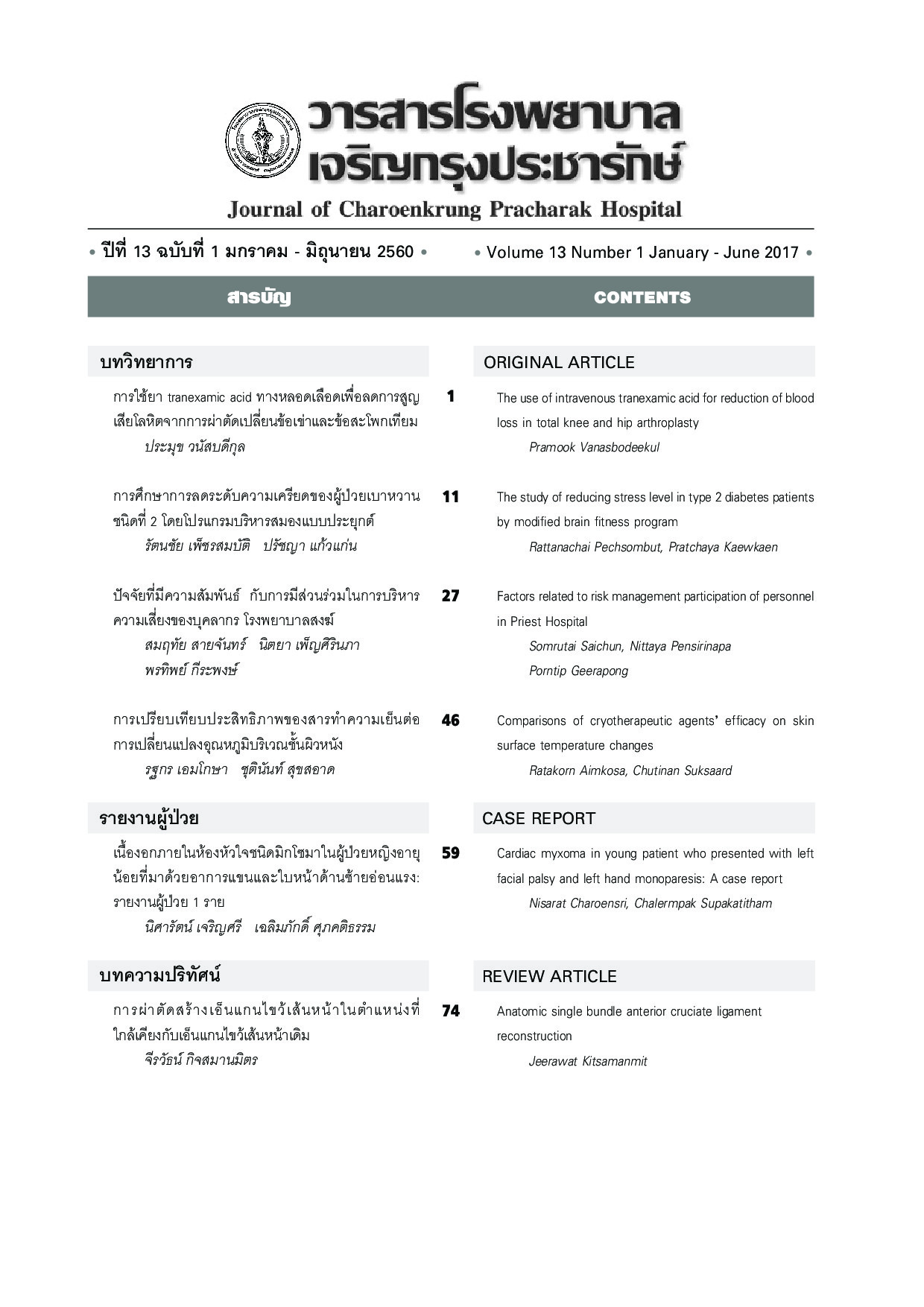| |
References
1. Bugaj, R. The cooling, analgesic, and rewarming effects of ice massage on localized skin. Phys Ther. 1975; 55: 11–9.
2. Schlesinger, N., Detry, M. A., Holland, B. K., Baker, D. G., Beutler, A. M., Rull, M., et al. Local ice therapy during bouts of acute gouty arthritis. J Rheumatol. 2002; 29: 331-4.
3. Deal, D. N., Tipton, J., Rosencrance, E., Curl, W. W., & Smith, T. L. Ice reduces edema: a study of microvascular permeability in rats. J Bone Joint Surg Am. 2002; 84A: 1573–8.
4. Karunakara, R. G., Lephart, S. M., & Pincivero, D. M. (1999). Changes in forearm blood flow during single and intermittent cold application. J Orthop Sports Phys Ther. 1999; 29: 177–80.
5. Weston, M., Taber, C., Casagranda, L., & Cornwall, M. W. Changes in local blood volume during cold gel pack application to traumatized ankles. J Orthop Sports Phys Ther. 1994; 19: 197–9.
6. McMeeken, J., Murray, L., & Cocks, S. Effects of cooling with simulated ice on skin temperature and nerve conduction velocity. Aust J Phys Ther. 1984; 30: 111–4.
7. Lee, S. U., Bang, M. S., & Han, T. R. Effect of cold air therapy in relieving spasticity: applied to spinalized rabbits. Spinal Cord. 2002; 40: 167–73.
8. Miglietta, O. E. Electromyographic characteristics of clonus and influence of cold. Arch Phys Med Rehabil. 1964; 45: 508–12.
9. Knight, K. L. The effects of hypothermia on inflammation and swelling. J Athl Train. 1976; 11: 7–10.
10. Lehmann, J. F., Masock, A. J., Wareen, C. G., & Koblanski, J. N. Effect of therapeutic temperatures on tendon extensibility. Arch Phys Med Rehabil. 1970; 51: 481–7.
11. Michenfelder, J. D., & Theye, R. A. Hypothermia: effect on canine brain and whole-body metabolism. Anesthesiology. 1968; 29: 1107–12.
12. Merrick, M. A. Secondary injury after musculoskeletal trauma: a review and update. J Athl Train. 2002; 37: 209–17.
13. Merrick, M. A., Rankin, J. M., Andres, F. A., & Hinman, C. L. A preliminary examination of cryotherapy and secondary injury in skeletal muscle. Med Sci Sports Exerc. 1999; 31: 1516–21.
14. Belitsky, R.B., Odam, S.J., & Hubley-Kozey C. Evaluation of the effectiveness of wet ice, dry ice, and cryogen packs in reducing skin temperature. Phys Ther. 1987; 67: 1080-4.
15.Chesterton, L.S., Foster, N.E., & Ross, L. Skin temperature response to cryotherapy. Arch Phys Med Rehabil. 2002; 83: 543-9.
16. Merrick, M.A., Jutte, L.S., & Smith, M.E. Cold modalities with different thermodynamic properties produce different surface and intramuscular temperatures. J Athl Train. 2003; 38: 28-33.
17. Myrer, W., Meason, G., & Fellingham, G.W. Temperature changes in the human leg during and after two methods of cryotherapy. J Athl Train. 1998; 33: 25-9.
18. Zemke, J.E., Anderson, J.C., Guion, W.K., McMillan, J., & Joyner, A.B. Intramuscular temperature responses in the human leg to two forms of cryotherapy: ice massage and ice bag. J Orthop Sports Phys Ther. 1998; 27: 301-7.
19. Sapega, A.A., Heppenstall, R.B., Sokolow, D.P., et al. The bioenergetics of preservation of limbs before replantation. J Bone Joint Surg Am. 1988; 70: 1500-13.
20. Owen, E.F. Jr., Hart, J.F., Donofrio, J.J., Haralambous, J. Mierzejewski, E. Paraspinal skin temperature pattern: an interexaminer and intraexaminer reliability study. J Manipulative Physiol Ther. 2004; 27: 155-9.
21.Dolan M.G., Thornton R.M., Fish D.R., & Mendel F.C. Effects of cold water immersion on edema formation after blunt injury to the hind limbs of rats. J Athl Train. 1997; 32(3): 233-7.
22. Drez D., Faust D.C., & Evan J.P. Cryotherapy and nerve palsy. Am J Sports Med. 1981; 9(4): 256-7.
23. Hocutt J.E., Jaffe R., Rylander C.R., & Beeve J.K. Cryotherapy in ankle sprains. Am J Sports Med. 1982; 10(5): 316-9.
24. Halar E.M., DeLisa J.A., & Brozovich F.V. Nerve conduction velocity: relationship of skin, subcutaneous and intramuscular temperatures. Arch Phys Med Rehabil. 1980; 61(5): 199-203.
25. Curl W.W., Smith B.P., Marr A., Rosenctance E., Holden M., & Smith T.L. The effects of contusion and cryotherapy on skeletal muscle microcirculation. J Sports Med Phys Fitness. 1997; 37(4): 279-86.
26. Jutte, L.S., Merrick, M.A., Ingersoll, C.D., Edwards, J.E. The relationship between intramuscular temperature, skin temperature, and adipose thickness during cryotherapy and rewarming. Arch Phys Med Rehabil. 2001; 82: 845-50.
27. Kanlayanaphotporn, R., Janwantanakul, P. Comparison of skin surface temperature during the application of various cryotherapy modalities. Arch Phys Med Rehabil. 2005; 86: 1411-5.
28. Enwemeka, C.S., Allen, C., Avila, P. Bina, J., Konrade, J., Munns, S. Soft tissue thermodynamics before, during, and after cryotherapy, Arch Phys Med Rehabil. 2002; 83: 1501-5.
29. Merrick, M.A., Knight, K.L., Ingersoll, C.D., Potteiger, J.A. The effects of ice and compression wraps on intramuscular temperature at various depths, . J Athl Train. 1993; 28: 236-45.
30. Palmer, J.E., Knight, K.L. Ankle and thigh skin surface temperature changes with repeated ice pack application, . J Athl Train. 1996; 31: 319-23.
31. Gage, A.A. What temperature is lethal for cells?. J Dermatol Surg Oncol. 1979; 5: 459-60.
32. Santos, Vanessa Batista da Costa et al. Effect of cryotherapy on the ankle temperature in athletes: ice pack and cold water immersion. Fisioterapia em Movimento. 2015; 28(1): 23-30.
33. Janwantanakul, P. The effect of quantity of ice and size of contact area on ice pack/skin interface temperature. Phys Ther. 2009; 95(2): 120-5.
34. Lide D.R. CRC Handbook of chemistry and physics. 84thed. Cleveland, OH: CRC press, 2003; 6_1–6_7.
35. Hardaker, N., Hobbs, S., Kennet, J. & Selfe, J. Cooling efficiency of 4 common cryotherapeutic agents. J Athl Train. 2007; 42(3): 343-8. |
|





